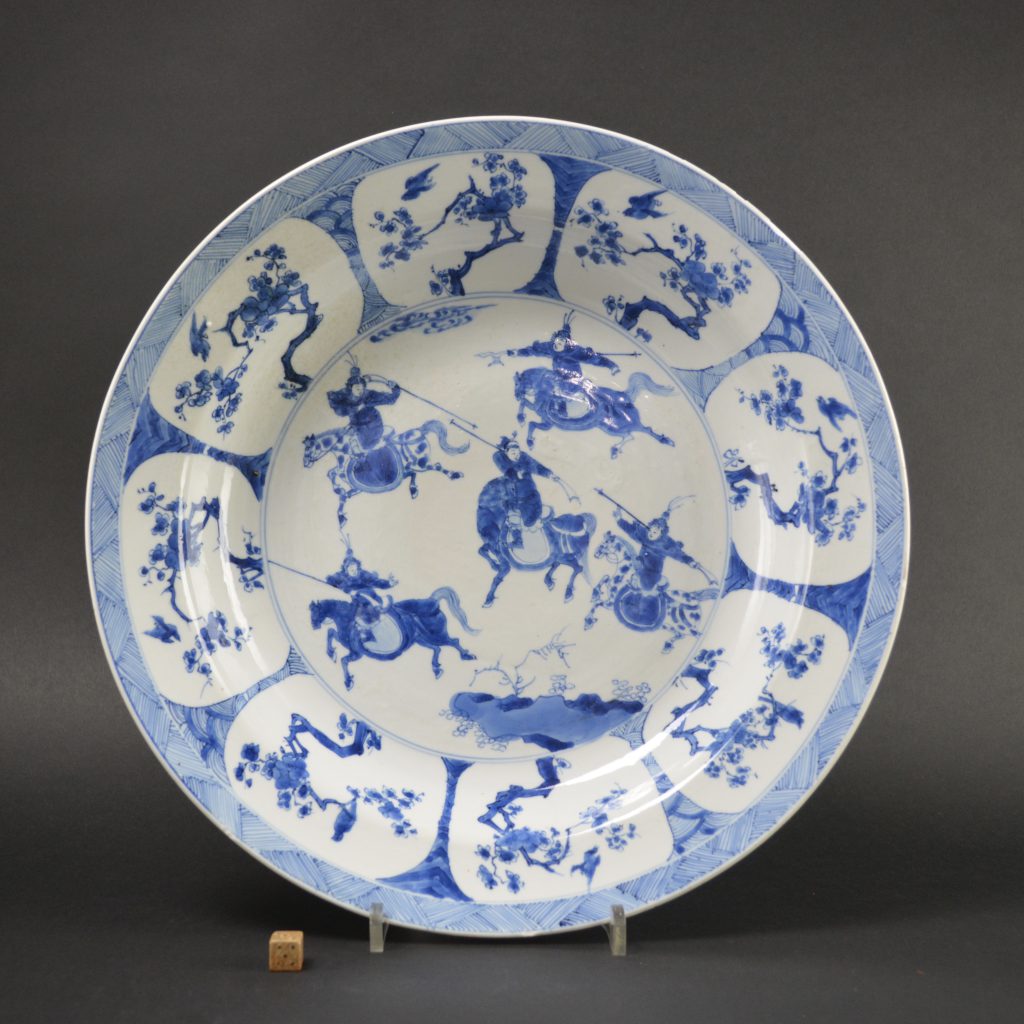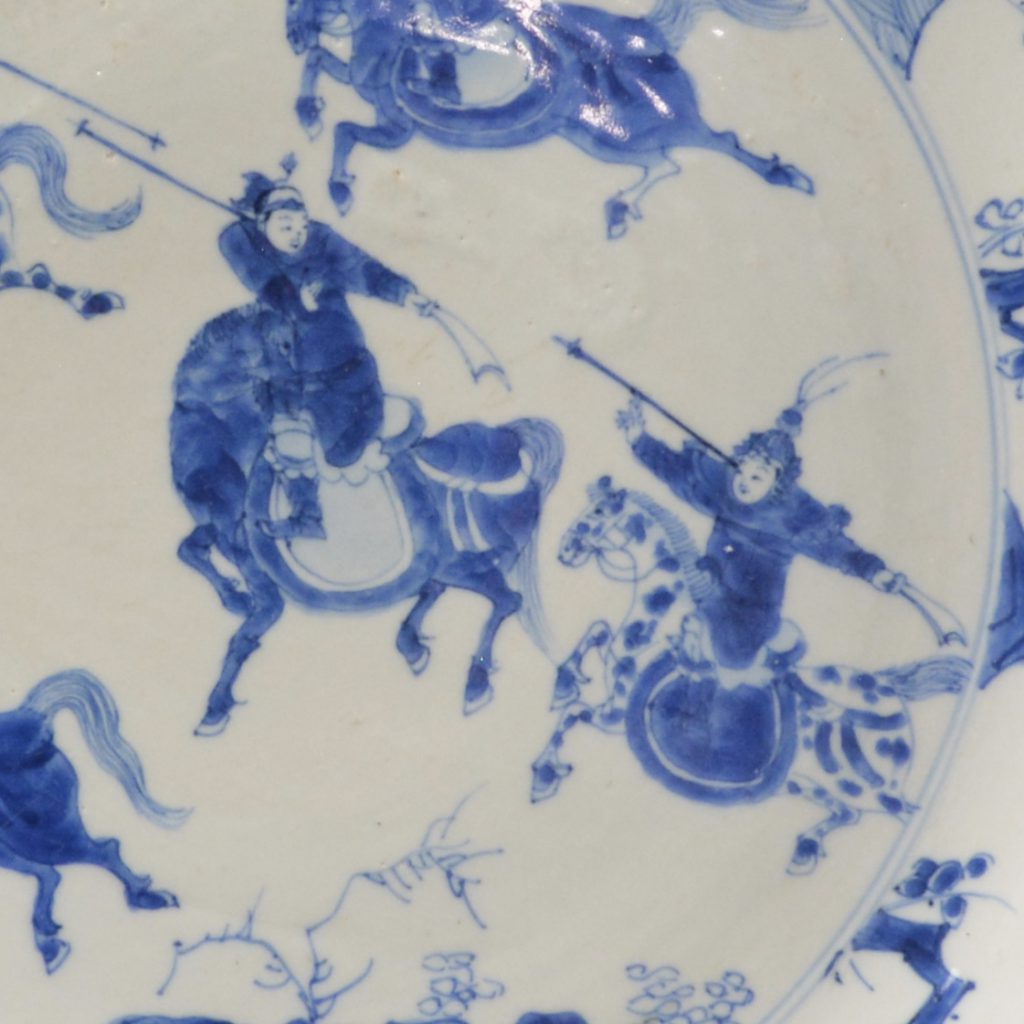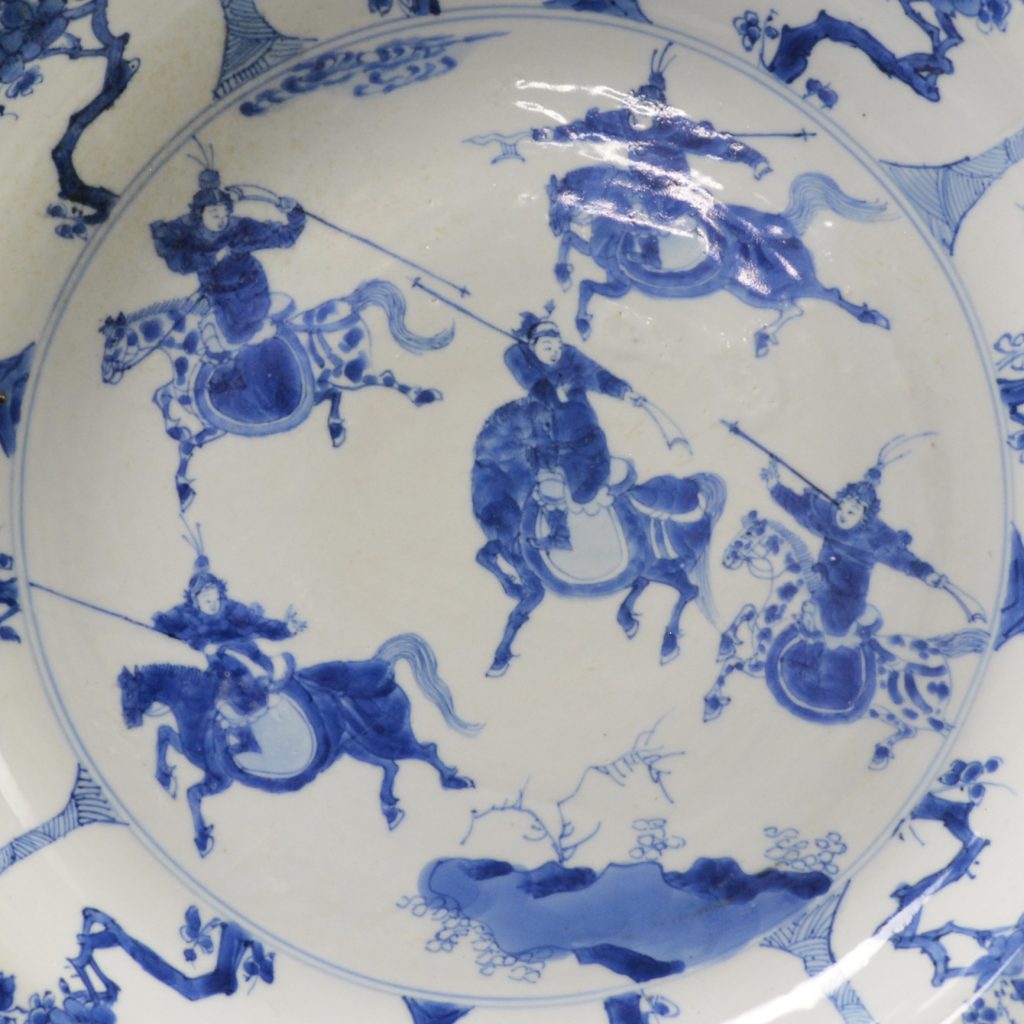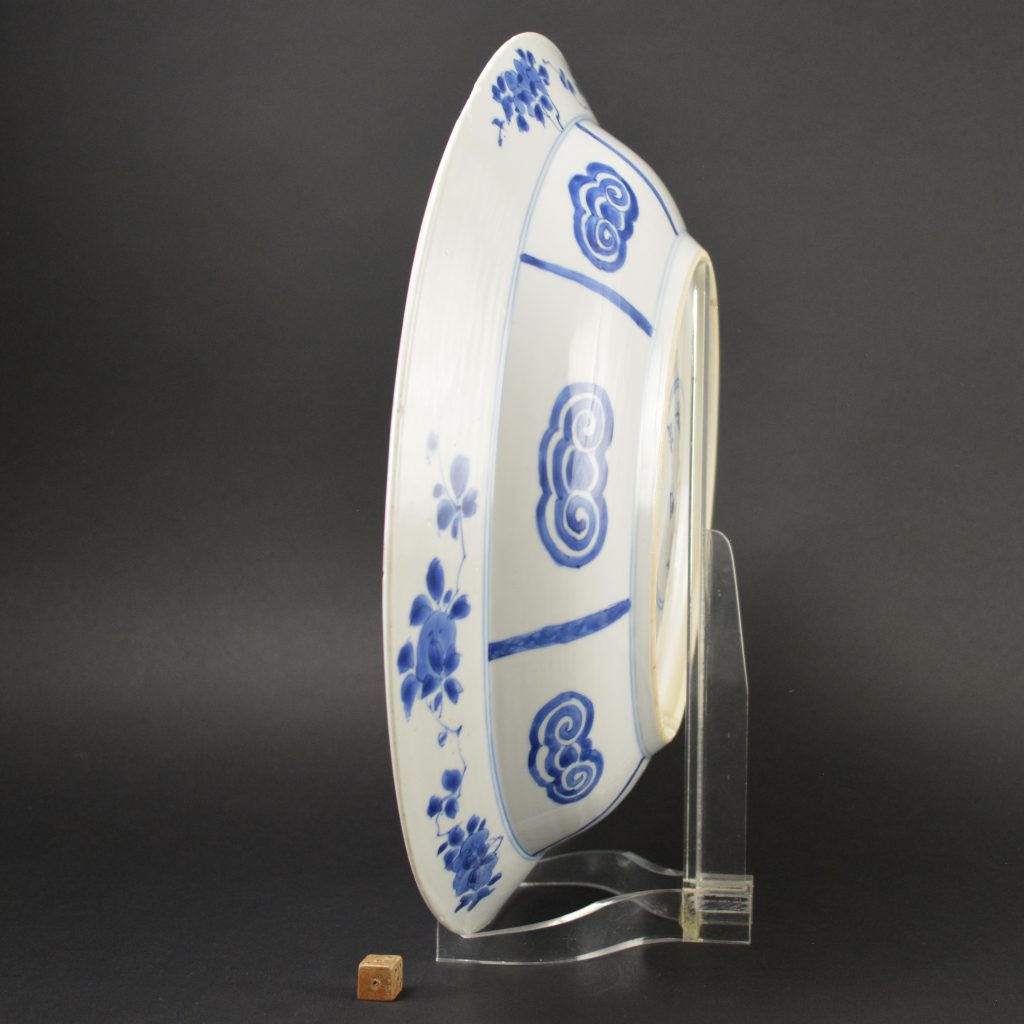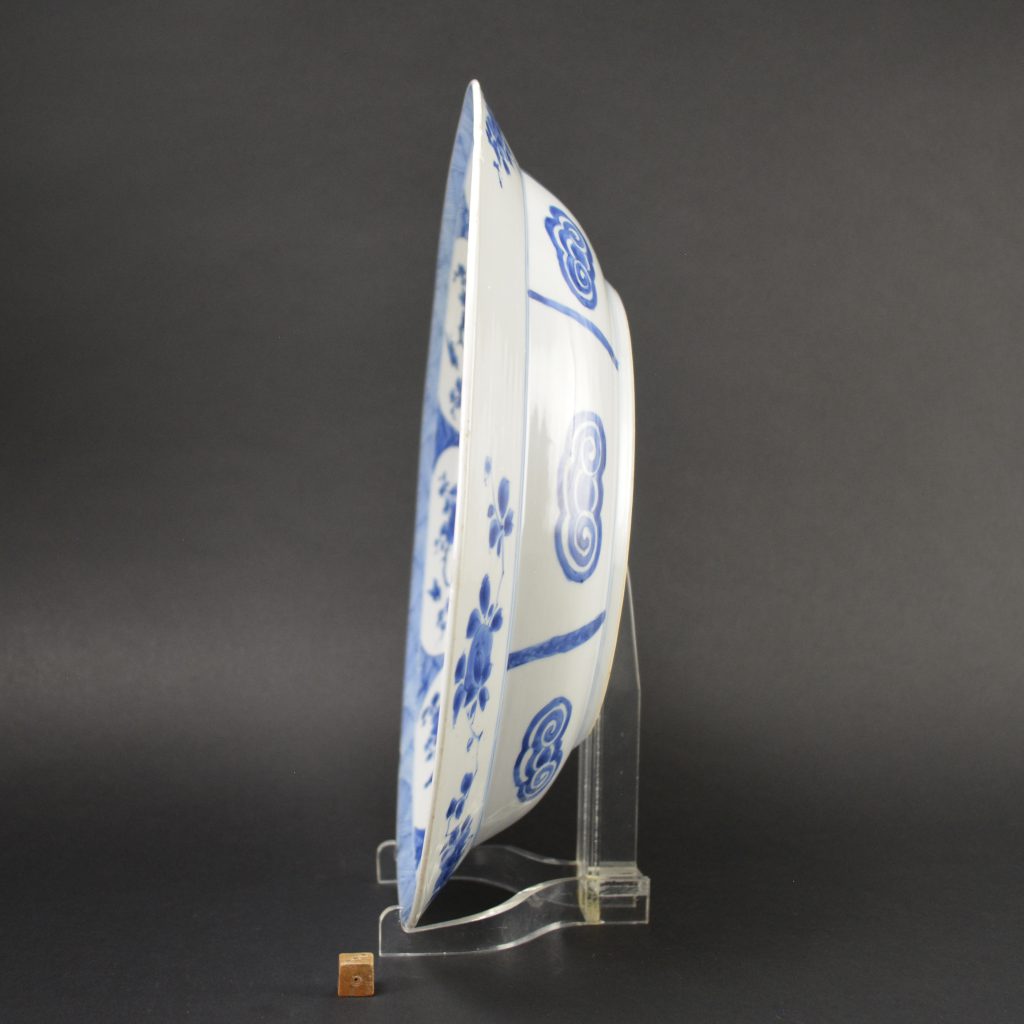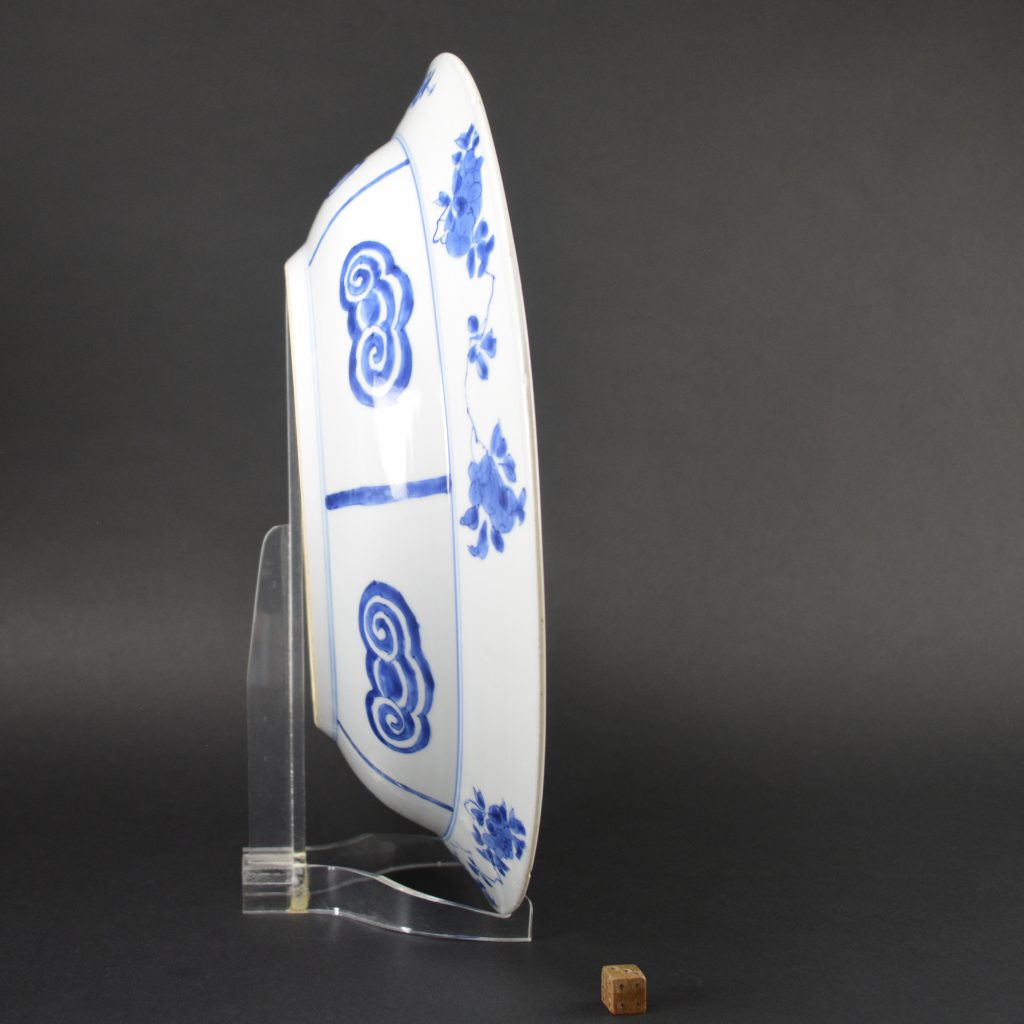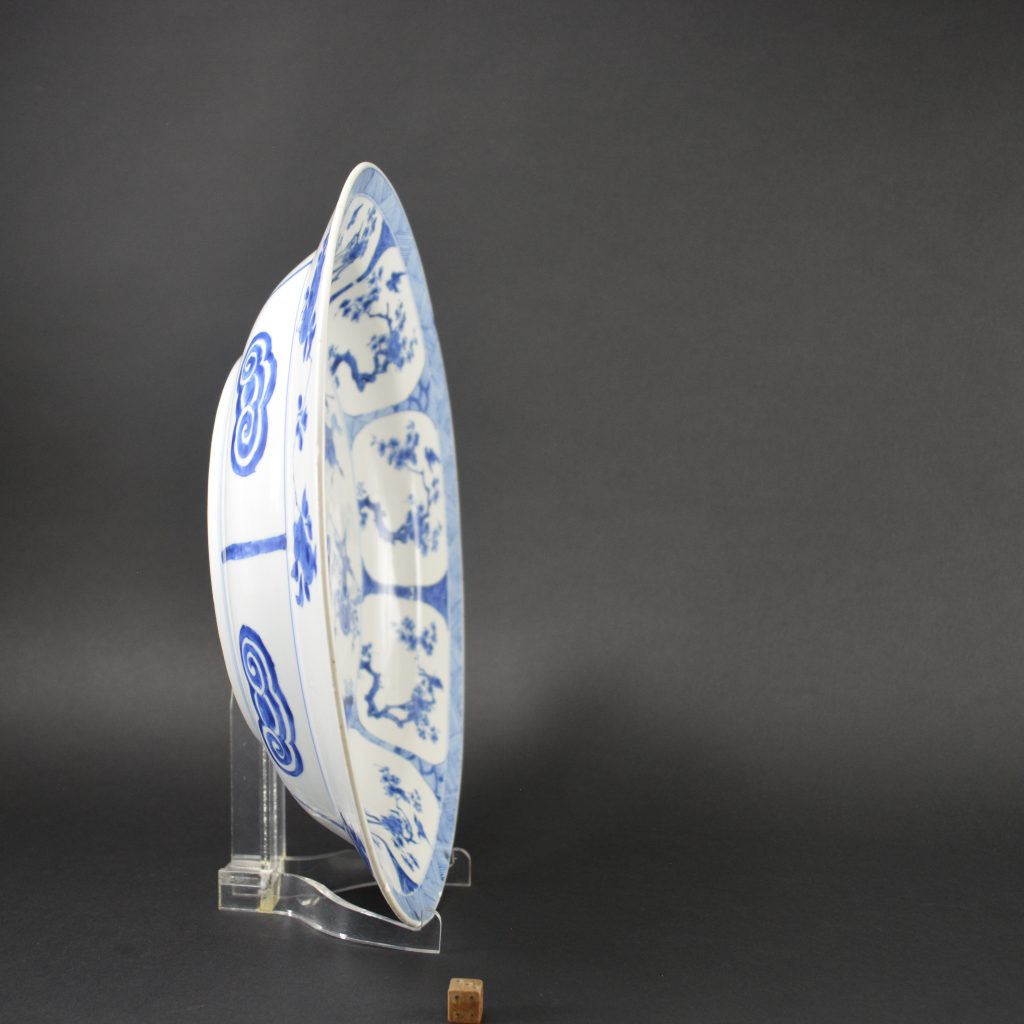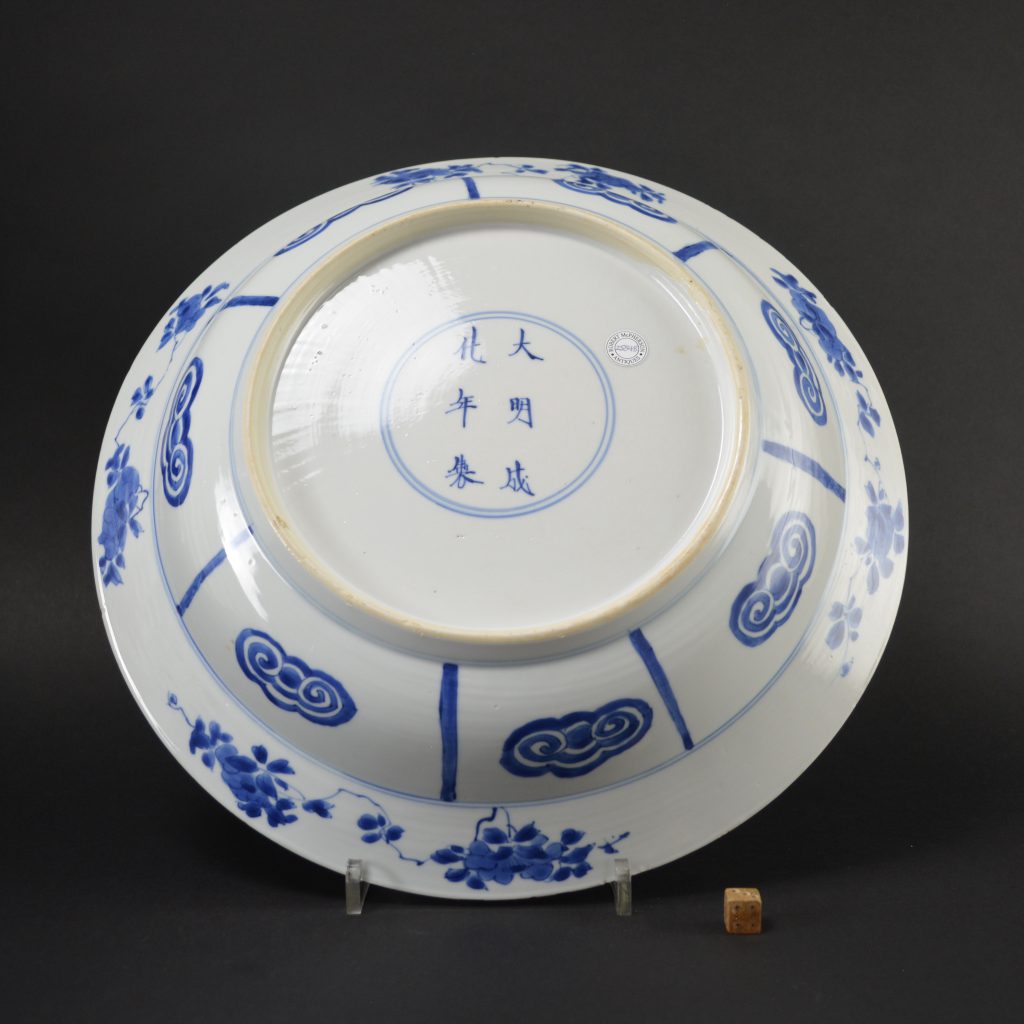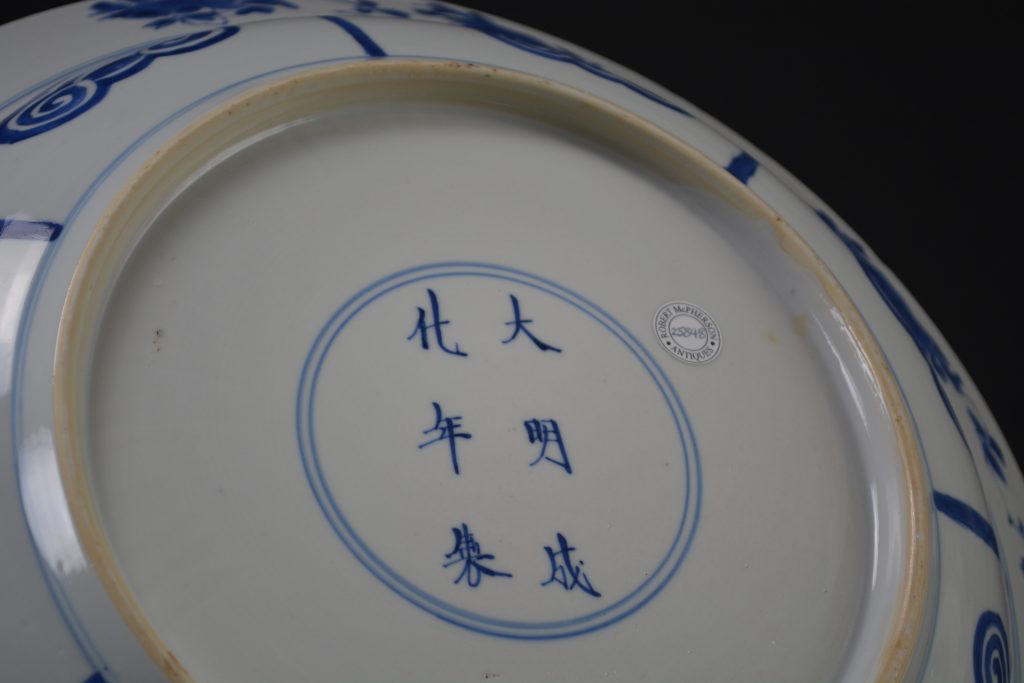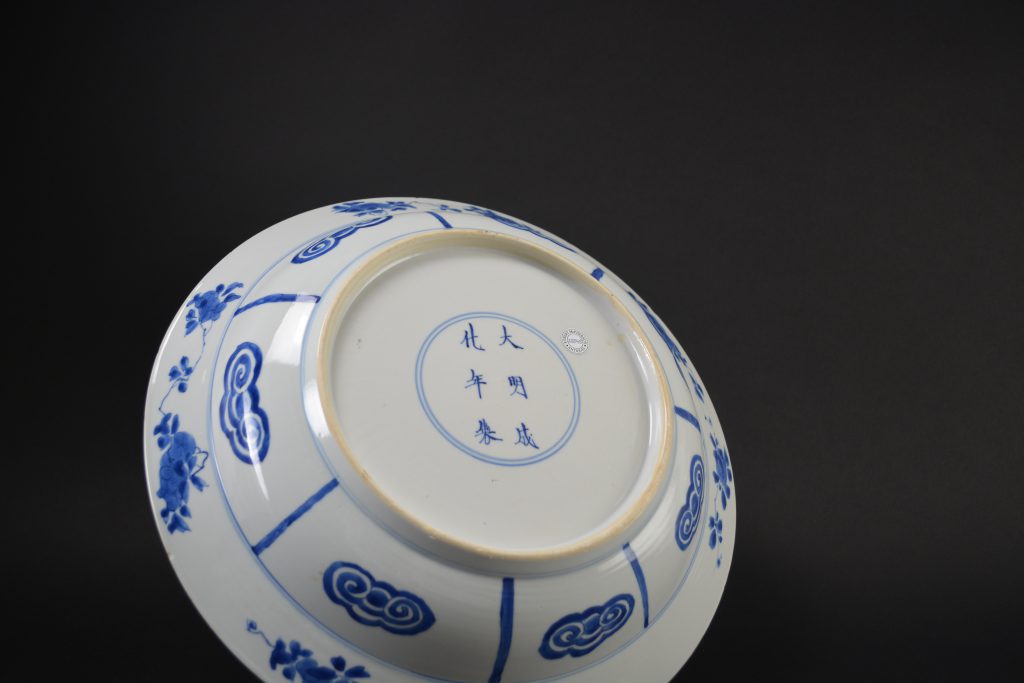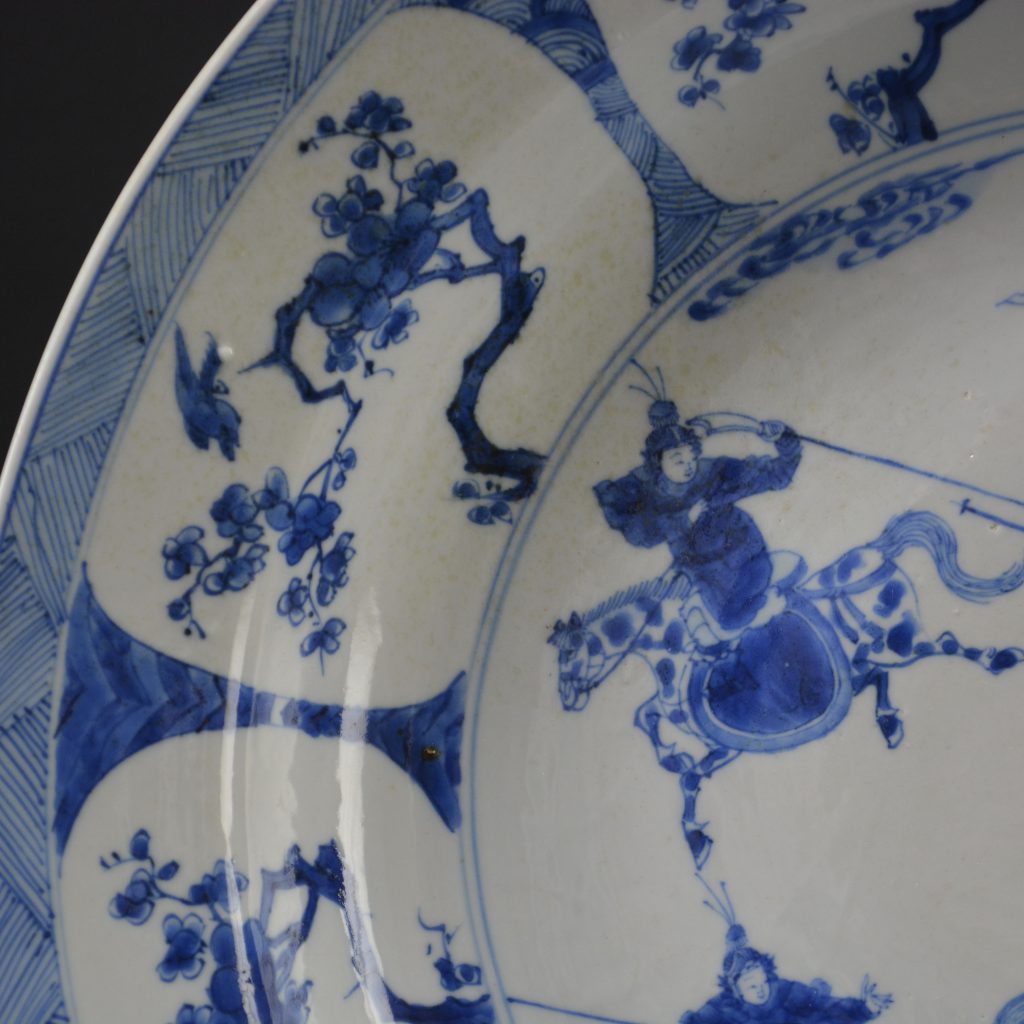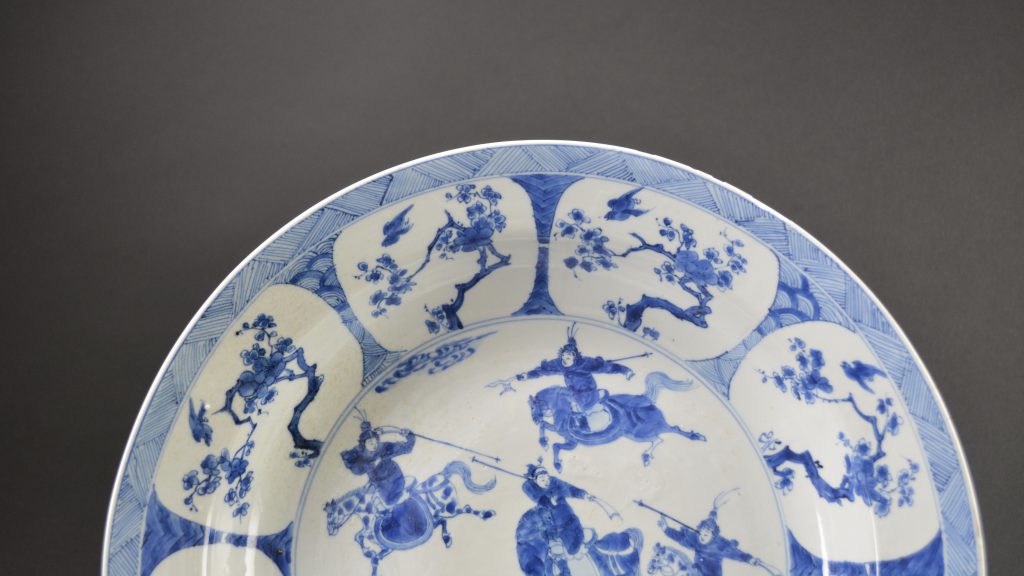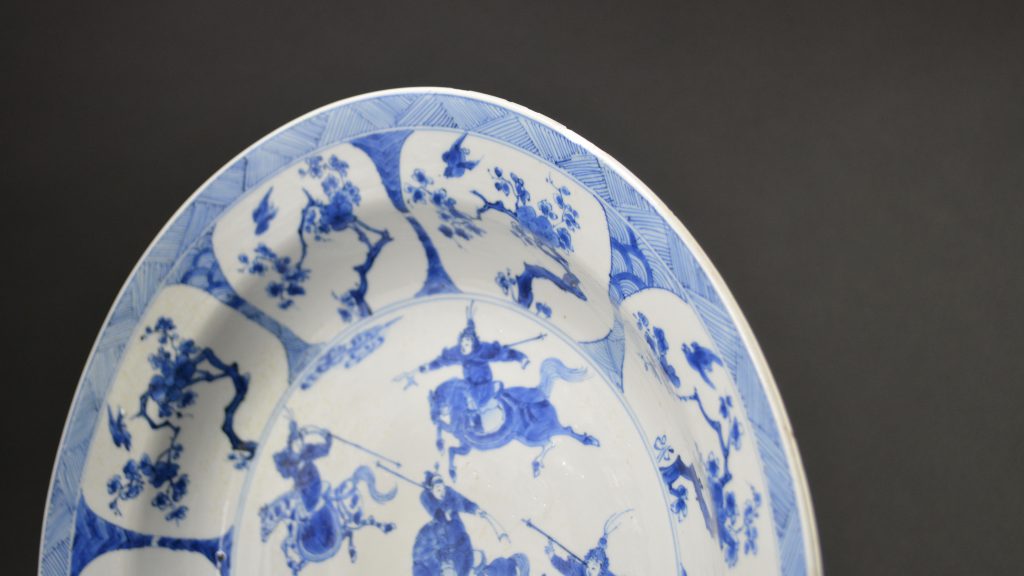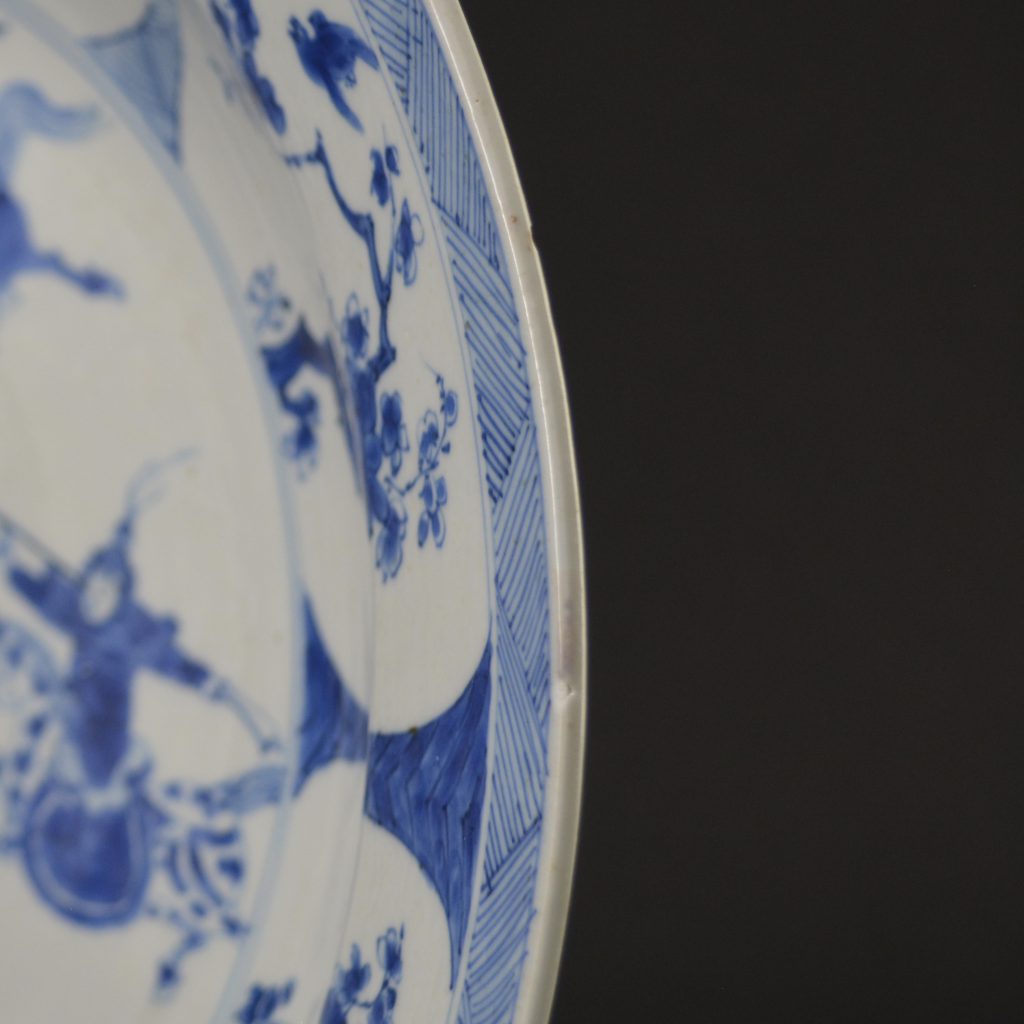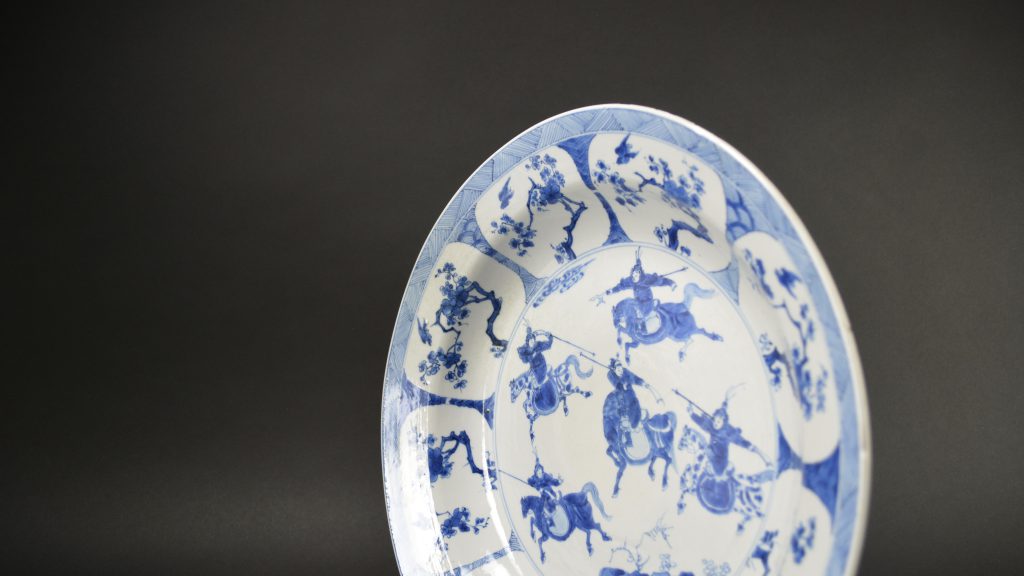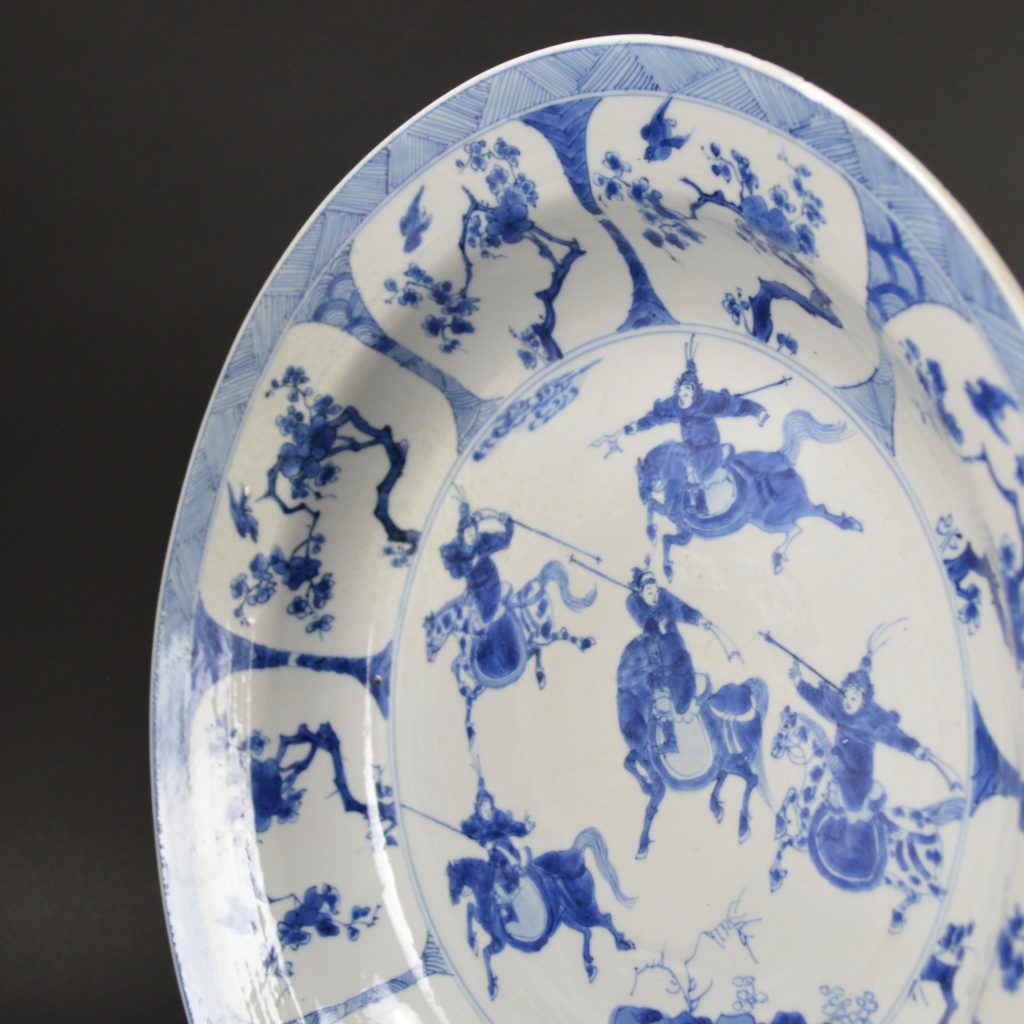
A Large Blue and White Kangxi Porcelain ‘Battle’ Dish
A Large Kangxi Blue and White Porcelain dish, the base with an apocryphal Chenghua mark (the Ming Emperor Chenghua reigned from 1465 to 1487). The central scene is of a dynamic Chinese cavalry, four mounted soldiers in armour with plumed helmets are surrounding another mounted soldier who has a smaller plum on his helmet. The border is of flowering prunus in panels reminiscent of Kraakware. Branches of plum blossom convey the `Five Blessings` Meikai Wufu – longevity, wealth, health, love of virtue and a peaceful death.
- Condition
- In good condition but with some small rim chips. There is an area of deep fritting to the rim c.2cm. Two small shallow (mostly glaze glaze) chips to the front and a minute frit. The back rim has several small chips and glaze frits. There is some very feint speckling to the glaze from the torso of the warrior at 11 o’clock to the rim.
- Size
- Diameter 34.5 cm (13 1/2 inches)
- Provenance
- From a Private Belgium Collection
- Stock number
- 25848
Information
Apocryphal Marks :
Apocryphal marks are frequently encountered on Chinese porcelain particularly on Kangxi Blue and White Porcelain, the mark of the Ming Emperor Chenghua who reigned from 1465 to 1487 being by far the most common, other Ming marks include Jiajing (1522-1566) and less frequently Wanli (1573-1620). These marks were not added to the piece to deceive, but more as a sign of reverence to earlier potters of the Ming dynasty (1368-1644). Occasionally they are used on pieces copying Ming Porcelain, these objects were probably made for collectors who could not afford the Ming original. Tianqi is an early period for such an apocryphal mark.

Plum Blossom :
Plum Meihua is one of the most important plants in Chinese art. Their flowers grow on knurled old angular branches, the flowers are fragile and pure, so they can be a symbol of vigour in old age as well as purity. The tree is the first to flower after the long hard winter, symbolically it can represent perseverance as well as renewal. This meaning is enhanced by a background of cracked-ice, the design can be seen as representing the end of winter and the beginning of spring with the ice of winter cracking to reveal a new year dawning. Branches of plum blossom convey the `Five Blessings` Meikai wufu, longevity, wealth, health, love of virtue and a peaceful death. The number five, an auspicious number to the Chinese, is taken from the five petals of the plum flower.
